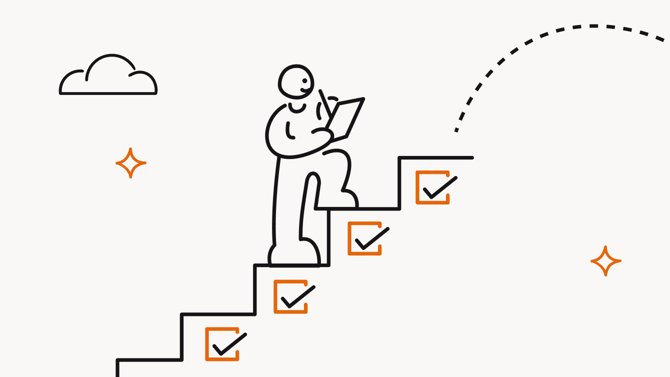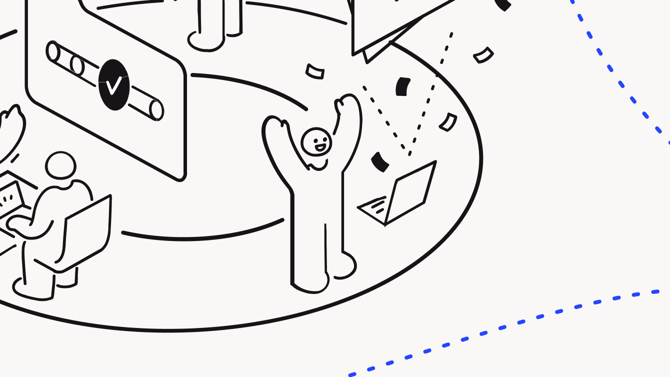Developers are an important part of many companies. In fact, the role of “developer” is so important that it’s projected to grow at a rate of around 25% per year in the United States. This is much faster than most other roles, even by tech standards.
Exclusive online summit
·
May 23 2024
Moments that matter: how to seed great work
What's in this article
As you’re probably aware if you’re reading this, developers (or devs if you’re cool) are responsible for designing applications, programs, websites, and more. In some cases, they also perform quality assurance tests. Ask any developer and they’ll tell you they spend a lot of time fixing bugs and snags, whether it’s their own or their colleague’s.
Aside from their technical knowledge, developers also must possess a keen understanding of a company’s goals and mission. Unfortunately, as their work tends to be highly independent, developers are often left out of company-wide information sessions and decisions. A great onboarding process can change that.
Let's take a look at some tips and tricks that will help you onboard your next developer with ease. Read ‘till the end to find Workleap Onboarding's new developer onboarding template.
Why a proper new developer onboarding is important
When you give your developer a proper onboarding experience, you send them the message — from day one — that they’re an important part of the team. This is not only good news for hiring managers, who likely put a lot of time and effort into hiring a dev and fear an increase in turnover rate. It’s also good news for your new developer, who deserves to feel integrated and to understand how they can make an impact. And, like anyone else, they deserve to enjoy their job!
What do we mean, exactly, when we speak of a “good” onboarding experience? We’re glad you asked.
The process of starting a new job involves a steep learning curve. This is true not only for entry-level employees but also for field experts. The reasons for this are simple — every company does things differently, and no two team dynamics are the same.
Therefore, an onboarding process is inevitable, and will happen whether or not you prepare for it. The difference is that an unplanned onboarding session will by its very nature be disorganized and, in turn, disorienting. A planned onboarding session, on the other hand, can leave your new hire with a strong sense of psychological safety and a high degree of confidence.
Not only does it make sense on paper, but there’s also science to back this up. This study from the University of California, Berkeley and Microsoft showed a direct correlation between an employee onboarding experience and job satisfaction, productivity, and even long-term outcomes.
How to onboard a developer: what to include in preboarding, onboarding, and training periods
Preboarding
Preboarding is the period between the date that the new employee signs a job offer and their first day of the job.
You might be thinking of this as a time to prepare for your new team member’s arrival. You’re half right. While there are many things that you can do to help pair for their arrival that don’t involve the newcomer, there are also some ways that you should engage with your new hire before their start date.
If planning out an entire onboarding process seems like a big task, fear not. It’s a lot easier if you break it down into three categories:
- Set up computer and workstation: a dev without a computer is like a cobbler without a shoe.
- Set up accounts and permissions: depending on their roles, developers may use a lot of different apps and software. If you set these up for your new hire ahead of time, you’ll save a lot of time on their first day. Don’t forget to also include any software access that falls outside of their role but is still important for every employee to have (like your HR software).
- Send out training videos: one of the hardest parts about starting a new job can be the anticipation of the unknown. You can clear up some of your newcomer’s anxieties by sending them a training video ahead of time that goes over your company’s tech stack.
Onboarding
And now is where the fun begins. Pop quiz: how long should an onboarding process last? The surprising answer is not one week or even two weeks. It’s actually probably more like three months, and can even last longer than that.
You can use this time wisely by doing the following for your new developer:
- Ease them in with the basics: before you even start to talk about coding, it’s a good idea to make sure that your developer knows their roles and responsibilities. Before you jump into the nitty-gritty, you should also make sure the dev has spent some time 1:1 with their manager and ideally their mentor, too.
- Share company goals and strategy: earlier we touched on how developers are sometimes excluded from big-picture company decisions. This is especially the case if they’re working on the back end. Make sure that you brief them on your company strategy, products, services, and basic customer personas within the first week.
Bring on the tech: developing is a highly technical job. Set your new team member up for success by sharing your coding standards, developer best practices, your CI/CD pipeline, your system architecture. Make sure your developer also sets up an IDE.
Training
As a highly technical role, training is an important part of the developer job. Some of the first training sessions that you’ll likely put a developer through include:
- QA process overview: details are an important part of coding, so knowing the company QA process in and out is key.
- Bug fixing: remember, fixing bugs is an important part of any dev role. Have your new developer fix a simulated bug to make sure that they understand the proper bug fix process.
- Pair programming session: pair your new developer up with a buddy so they can practice coding without totally being left to their own devices.
- Pull request: many companies find it advantageous to have a developer go through a pull request in the training phase. Pull requests let other team members know that a developer has made a change or completed a feature.
- Best practices: it may seem basic, but it’s important to go through basic development processes and best practices of your organization during the training period. If you can provide a reference, that’s even better. It will take a while for your new dev to memorize them.
What a great developer onboarding experience looks like
On board with what you’ve read so far? If it still seems a bit too theoretical, let us help you envision a great onboarding experience with these new developer onboarding examples. Seeing one or more of these in your onboarding plans is a surefire sign that you’re doing something right.
- Company values: if you can look at your onboarding plan and see at least three sessions dedicated to company culture and values, then you’re doing something right. This can include a meeting with the CEO, with other team managers (a marketing manager is a great pick for this), and even presentations on company history and milestones.
- Socialization: again, development is social work. But working for a company is inherently a social act. This is still true for remote teams! In fact, if you’re working remotely, scheduling fun events into your day is extra important. It doesn’t have to just be an informal happy hour over Zoom or Teams. It could also be something like playing Jackbox.TV as a team for an hour. Depending on the level of your new developer, an educational game like Oh My Git, which teaches you about Git commands, could also be appropriate.
- Questions: if your developer is asking questions throughout their onboarding process, don’t take this as a shortcoming. Instead, it means that you’re stirring up curiosity. This means that the onboarding process is working! To ensure that the feedback loop continues past the onboarding period, set up regular 1:1s to periodically take the pulse of your new hire.
Onboarding a new team member is hard. You don’t have to do it alone. Have a look at Workleap's tried-and-true new developer onboarding template and new developer onboarding checklist to help you on your way.



